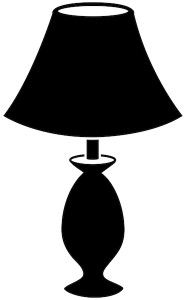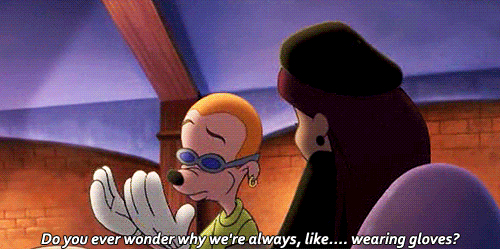An Attempt at a Clever Title: The Topic of the Blog Post
Confused about the title? Or maybe you’re confused about my asking if you’re confused about the title? Or maybe you’re confused about my asking if you’re confused about my asking if you’re confused about the title? Or maybe you’ve had enough if this nonsense and just want me to get to the point?
This week’s creative writing topic is an interesting trope of which I’ve become rather fond over the course of my own writing: a technique known as “lampshade hanging“, or simply “lampshading”. It’s an idea I first learned about when reading TV Tropes, and because of the way I often see it being employed in humorous writing, it’s quickly becoming one of my favorite devices in fiction. But you probably don’t care yet what I think about it; you’re just waiting for me to explain what it is so you can decide whether you’d like it too. Unless you went ahead and skipped to the next paragraph before reading this one and already realize how I’ve been incorporating the trope into this blog post. Am I right?

This is not the lamp you’re looking for…
OK, no more stalling. Lampshade hanging is a trick employed by writers to address any noticeable implausibility or obvious trope usage in a plot by drawing attention to it… and then moving on. But wait, why would you want to point out your story’s flaws in the first place? Counter-intuitive as it may seem, this exercise does have a few advantages:
- It proves you aren’t trying to get away with a questionable plot development by showing your audience that you’re also aware of the absurdity;
- It establishes a sense of realism in your story by demonstrating that your characters are just as skeptical about the implausibilities in the plot as the real-life people following it; and
- It’s a way to beat critics to the punch of deprecating you for the “mistakes” you already know are in your story.
Need an example? Here’s a rather brilliant one from my favorite moment in the 2000 Disney film An Extremely Goofy Movie, when Bobby Zimmeruski randomly realizes something strange about the world around him…

You know you’ve always wondered the same thing…
The best part? This question is almost immediately dismissed and never comes up again for the rest of the movie!
It should be noted that whenever a writer “hangs a lampshade” on a particularly glaring plot hole, it could be taken as a hint from their subconscious about the true extent of an unforgivable absurdity in an otherwise serious work. Of course, the technique can also be observed in use to the extreme in stories that are intended to be especially humorous and even self-aware, which (when done well) can be very entertaining (like in this product placement clip from the comedy TV series 30 Rock, which brilliantly demonstrates Tina Fey’s mastery of humor tropes). Mostly, though, it works just fine when used in moderation, kind of like a brief comic relief to complement the action in the rest of the story.
Bonus note: aside from “lampshades”, the practice is also known as hanging a “red flag”, “lantern”, or “clock”. The trope is referred to as “lampshade hanging” in my blog because it’s the most common term used on the TV Tropes website, which in turn attributes the phrase to Mutant Enemy.
While I don’t hang lampshades often in my fictional works, I do enjoy throwing them into my blog posts now and then, which I tend to use for humorous purposes as a personal reminder not to take myself or my writing too seriously (a flaw of which I’m painfully guilty, possibly evidenced by the fact that I don’t like to end phrases with prepositions). Hopefully my readers find them entertaining, or at the very least, tolerable. I do enjoy practicing lampshade hanging, and if you like to keep an element of comedy in your own writing, you might like to take it up too!
Now if you’ll excuse me, I must go do extensive research for the next blog topic on which my novice writer’s knowledge is still relatively limited. Thanks for reading!


Recent Comments